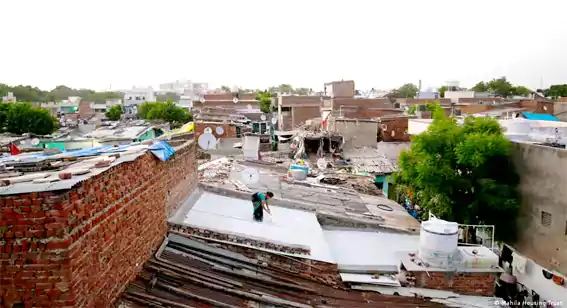White roof: Scientists have long recommended white roofs. A new study reveals that houses with dark roofs incur thousands of extra rupees in annual expenses. Following research conducted in Australia, scientists discovered that houses with white roofs yield an annual saving of approximately 700 Australian dollars (about Rs 40,000). This occurs because less electricity is consumed to cool houses during the summer months. Sebastian Fausch, an associate professor at the University of New South Wales in Australia, explains, “Darker roofs result in higher cooling costs for your home.” Last year, the average electricity cost in New South Wales was $1,827, whereas those with light-colored roofs paid a lower bill, up to $694. This translates to a 38% increase in electricity costs for homes with dark-colored roofs in Sydney. The success in India mirrors that of households in many parts of the world, with ongoing campaigns promoting white roof painting.
In 2009, a social service organization initiated this effort in poor slums in Ahmedabad, Gujarat. Impressed by the results, the administration adopted the initiative, and in 2017, a pilot project commenced, resulting in over 3,000 houses having their roofs painted white.
Ahmedabad experiences temperatures of up to 50 degrees Celsius in summer. Following the success of Ahmedabad, this campaign spread to numerous cities across the country, particularly in areas with high summer temperatures. A study conducted in 2020 by the Ahmedabad administration in collaboration with scientists Brahmabhatta and Priya Dutt from the Indian Institute of Public Health in Gandhinagar compared houses with light-colored roofs to those with dark-colored roofs. They found that houses with light-colored roofs were one degree Celsius cooler.
Light-colored roofs offer several benefits. Various types of light-colored roofs are available, such as modroof, which uses materials like cardboard and wood. According to a study conducted in Gujarat, modroof reduced temperatures by up to 4.5 degrees Celsius compared to houses with concrete roofs. This process, known as ‘cool roofing,’ involves designing roofs to absorb fewer solar rays, thereby reducing heat transmission into the house. Additionally, these roofs reflect some of the heat absorbed by the building, helping to maintain cooler indoor temperatures.
Professor Fausch emphasizes the importance of implementing these roofs in cities to mitigate global warming, stating, “Currently, cities account for 75 percent of the world’s total carbon emissions. Therefore, cooling cities is crucial.” He warns that as climate change worsens, cities will become hotter, affecting various aspects of life. He adds, “Sweltering cities not only make life difficult but also pose dangers, with more people dying from extreme heat in Australia alone than from any other natural disaster.”
